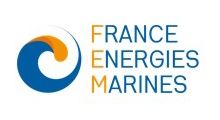
SEMMACAPE
Monitoring and study of marine megafauna in wind farms by automatic characterisation
Duration: 36 months (2019 - 2022)
Context
The development of offshore renewable energy is booming in France. Between 2011 and 2017, the French government has launched 5 calls for tenders and expressions of interest for a total of 7 wind farms installed, 4 wind pilot farms and 2 tidal pilot farms. Over the next 5 years, 5 additional calls for tenders are scheduled, which could double the installed capacity at sea. According to the Environmental Code, project developers must produce environmental impact studies, particularly on marine megafauna (birds, mammals, turtles, big fish…).
The analysis of the impacts of an ORE project generally requires aerial observations of marine megafauna in order to better characterise the frequentation of species in the proposed areas. This includes monitoring during the construction, operation and decommissioning phases, a total of about 30 years.
These observations are classically based on aerial overflights by specialised naturalist observers. However, in the age of big data, recent scientific and technological developments offer new prospects for radically improving the cost-effectiveness of such monitoring
Objective
To demonstrate the ability of aerial photography processing and analysis software to automatically inventory marine megafauna.
Scientific and technical contents
- Aerial megafauna observation campaign (standard visual method and VHR digital photography system), integrating the seasonal variability of species and environmental conditions.
- Development and qualification of 2 types of automatic aerial photography processing algorithms for animal identification and classification: detection by deep neural (end-to-end) network, moving directly from the global image to bounding boxes; detection of anomalies by unsupervised deep learning.
- Assessment of the performance of each detection method tested based on indicators classed by species or group of species, as well as according to environmental conditions.
Ressources
Partners and funding
This project is led by UMR IRISA – Université Bretagne Sud.





This project benefits from an ADEME grant under the “Sustainable Energies” call for research projects (2018-2019).

Photo credit: Anette Mageau / Pixabay